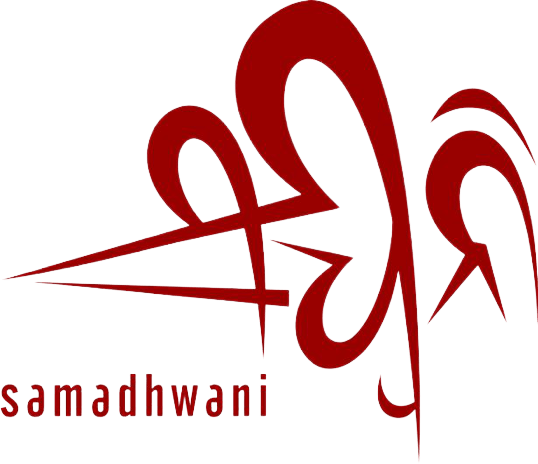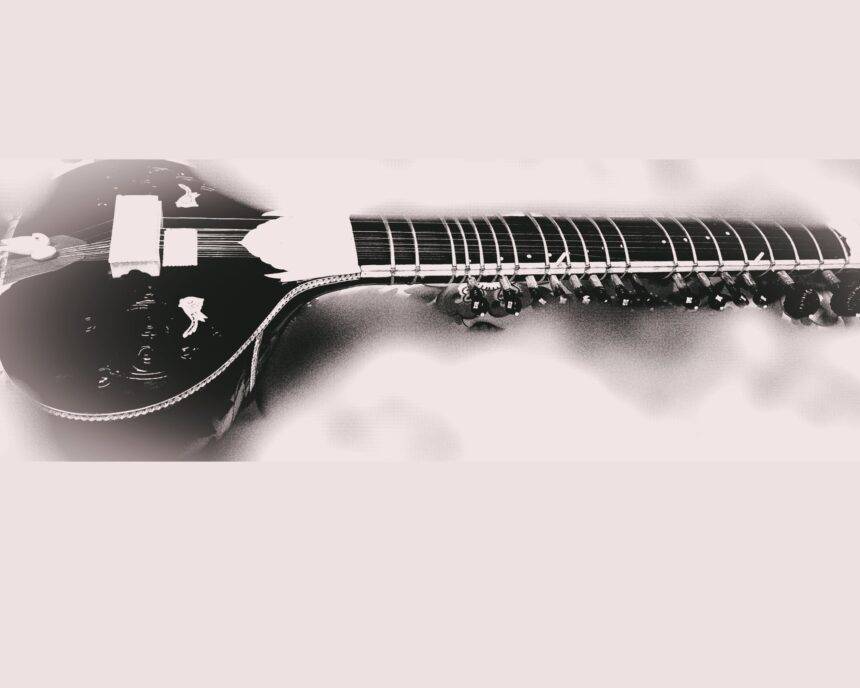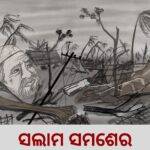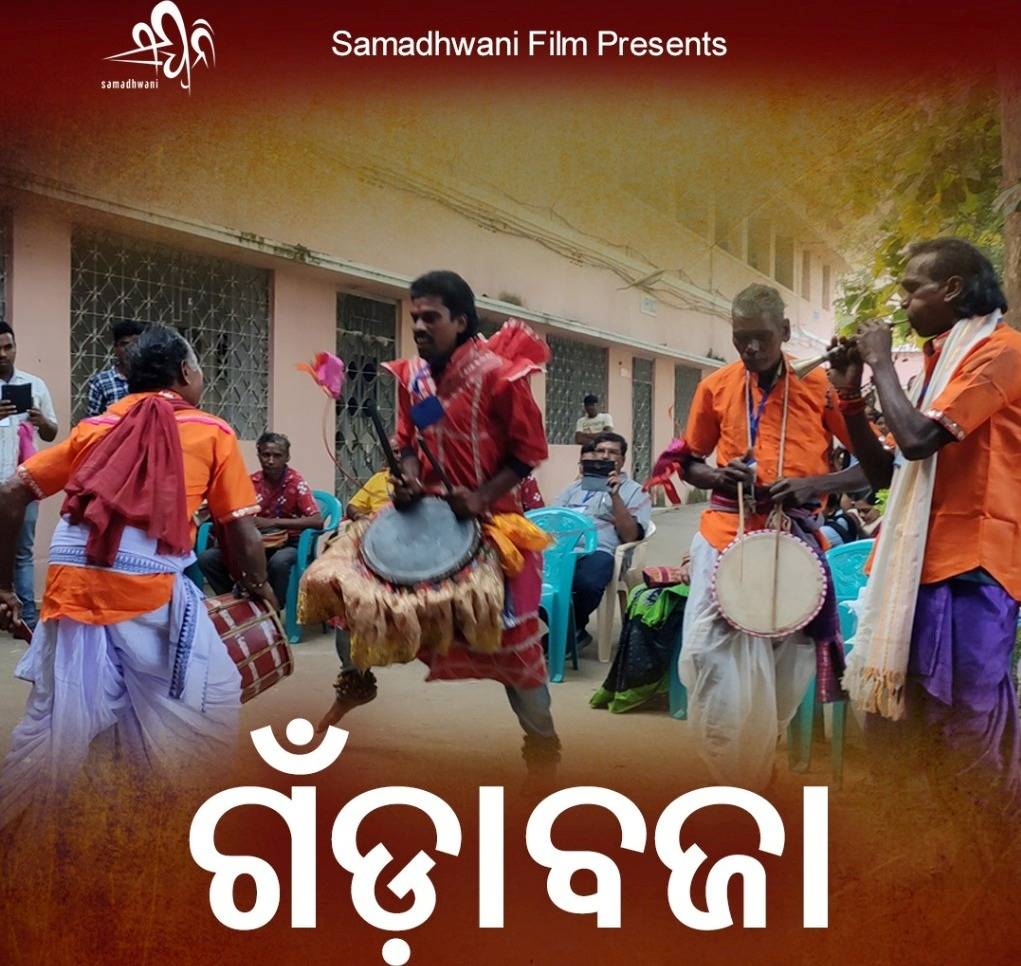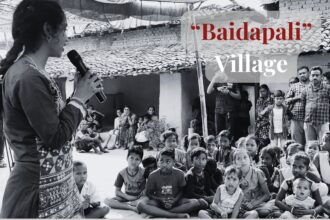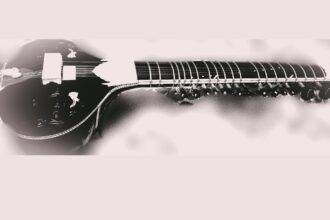Arguments had long raged over whether the Sitar is a traditional instrument, descended from the few veenas mentioned before, or originated in Persia. A reasonable theory to support the Persian claim is to attribute the invention of the instrument to Amir Khusrou. Many literature talks of Amir Khusrou may have also been mistaken for Khusrou Khan. They believe that Khusrou Khan, not Amir Khusrou, may have invented the Sitar.
The Persian connection to the Sitar is not direct but through historical and cultural exchange between India and Persia (modern-day Iran). The Persian influence on Indian music can be traced back to the Mughal Empire, which ruled over much of India from the 16th to the 19th centuries. The Mughals were known for their patronage of the arts and their love of music, and they brought many Persian musicians and instruments to India. One of the most important Persian instruments to influence Indian music was the lute-like instrument known as the tar. The tar has a similar shape and playing technique to the Sitar, and it is possible that the Sitar was developed in India as a variation of the tar. The Sitar also has similarities to other Persian and Central Asian instruments, such as the setar and the dutar. The Sitar has a complex history and cultural influence, drawing on various musical traditions and styles from India and the surrounding regions.
The Silk Road was supposed to have played an essential role in connecting the instrument to other Asian countries. Silk Route is an ancient network of trade routes that connected China, India, Persia, and other regions of the world. The exchange of goods, ideas, and cultural practices along the Silk Road significantly impacted the development of many aspects of society, including music. It sounds logical that Sitar, as we know it today, evolved over many centuries and is a product of various influences, including Persian, Central Asian, and Indian musical traditions(Millward, 2018). The Silk Road played a significant role in transmitting these musical ideas and instruments between regions.
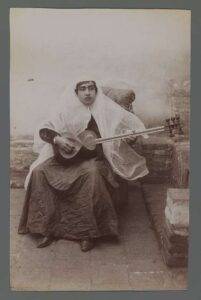
Brooklyn Museum – Woman Seated Playing 6-string Persian Lute
One example of this is the influence of Central Asian lutes, such as the dutar and the tanbur, on the development of the Sitar. These instruments were introduced to India by the Mughal Empire, which had close ties with Central Asia and Persia. The Mughal emperors were known for their patronage of the arts. They brought many Persian and Central Asian musicians to their courts, where they would perform for the royal family and influence Indian music. Additionally, the Silk Road facilitated the trade of silk, which was used to make strings for instruments like the Sitar. The silk strings were prized for their bright tone and responsiveness, and they became a popular choice for sitar players in India. Overall, the Silk Road played a crucial role in the evolution of the Sitar. It allowed for the exchange of musical ideas and instruments between cultures and facilitated the trade of materials necessary for its construction. Yet, the instrument’s appearance in its current form gives the impression that it is of Indian origin, even if the instrument may have originated elsewhere in Asia and returned to India in a modified form via silk.
There is limited evidence of the Sitar in Persian literature, as the Sitar is primarily associated with Indian classical music rather than Persian music. However, as mentioned earlier, similar instruments in Persian music, such as the tar and setar, may have influenced the development of the Sitar. One example of a reference to a similar instrument in Persian literature is in the poem “Layla and Majnun” by the Persian poet Nizami Ganjavi. In the poem, the character Majnun plays a stringed instrument called a “rud” while he sings his love for Layla. The rud is a type of lute that is similar in shape and playing technique to the tar, and it may have influenced the development of the Sitar. Overall, while there may not be direct references to the Sitar in Persian literature, there is a rich history of stringed instruments in Persian music that played a role in the evolution of the Sitar. The words commonly used in Sitar, such as Sitar, that have evolved from the word ‘Sheh-tar,’ ‘mizrav’ etc, are Persian.
The sitar’ baaj’, a specific style and technique of playing the Sitar, was made in presence in the Mughal Empire in India. The clear picture of the Sitar styles of Playing was evident in the period with Masit Khan, a famous sitar player and musician living in the 18th century in India. He was a disciple of the legendary musician and composer Tansen and played a significant role in developing the Sitar baaj. Masit Khan was renowned for his mastery of the Sitar and ability to express complex emotions through his music. He is credited with introducing several new techniques and innovations to the Sitar, including the use of the “da” stroke, which involves plucking the string with the index finger and then quickly damping the sound with the thumb. Masit Khan’s contribution to Indian classical music was significant, and he is considered one of the most influential sitar players in history. His style of Playing influenced many musicians who came after him. Today, Masit Khan’s legacy lives on through his music, which continues to inspire and captivate audiences around the world.
